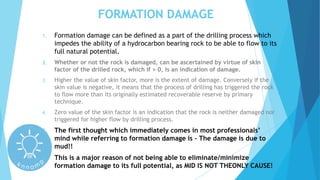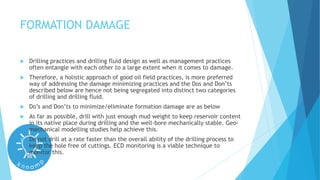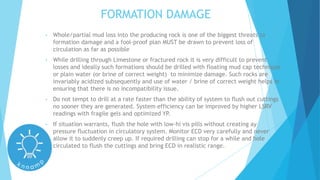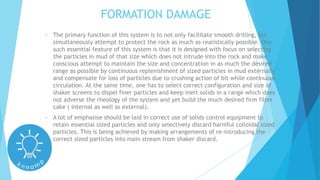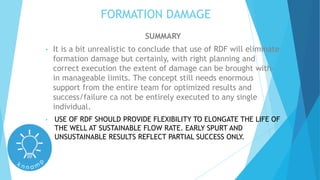Formation damage refers to the impairment of hydrocarbon-bearing rock flow due to the drilling process, primarily assessed through skin factor measurements. While mud composition is commonly blamed for such damage, various factors including rock properties and drilling practices also contribute significantly. The document emphasizes a holistic approach in drilling techniques and mud design to minimize damage, advocating for reservoir drill-in fluids (RDF) specifically aimed at mitigating formation damage while ensuring efficient drilling and completion.
